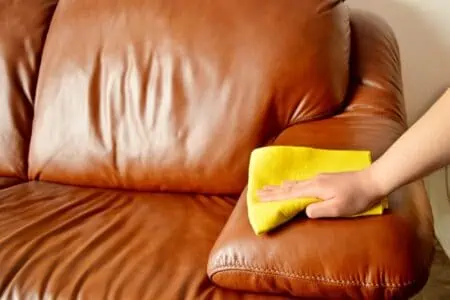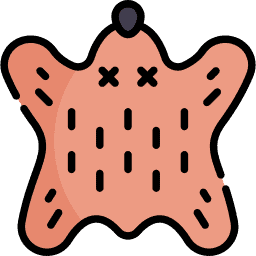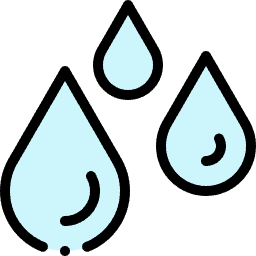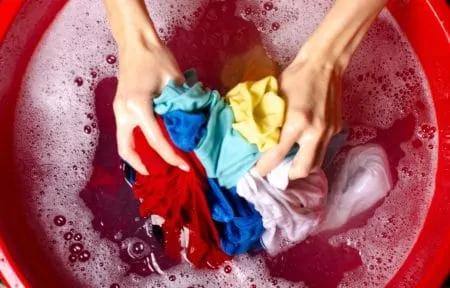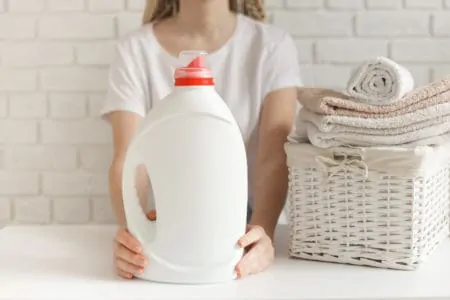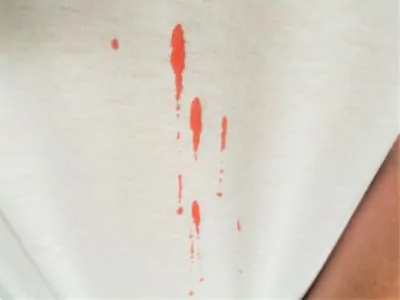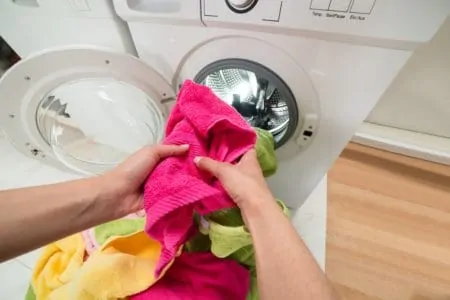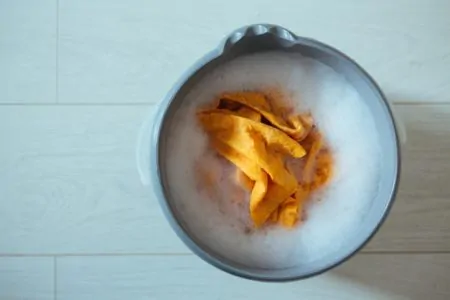Leather is a beautiful material — whether used for clothes, bags, upholstery, or car seats. It can last a long time when well-maintained. But what do you do about stains?
Since leather is prone to stains, it’s essential to arm yourself with all the right products, tools, and hacks. We’re here to show you how to remove stains from leather, so it always looks like the statement piece it’s meant to be.
Whether you’re battling water, grease, ink, or mold stains, now is the time to learn how to eradicate them.
Key Takeaways
- Use DIY leather stain removers like lemon juice and cream of tartar or distilled white vinegar and olive oil.
- Remove water stains with distilled water, grease or oil stains with lemon juice and cream of tartar, and ink stains with rubbing alcohol.
- Eliminate mold and mildew using mild soap and rubbing alcohol, and treat salt stains with a vinegar solution.
- To protect leather, condition it regularly, keep it dry, and maintain a clean environment.
Leather Stain Removal — Home Remedy
While you can purchase a commercial leather cleaner for amazing results, you might not have one to hand. That’s where a DIY leather stain remover comes in handy. You can make one using products you already have in the home.
Mix together:
- One part lemon juice.
- One part cream of tartar.
Another option for general cleaning is:
- Two parts distilled white vinegar.
- One part olive oil.
How to Remove Stains From Leather
Stains can ruin your leather. It’s important to clean them up as soon as possible. However, there’s no one-size-fits-all solution for every stain.
Depending on the stain you’re facing, you have to take a specific approach. We’ll walk you through common stubborn stains and the best way to remove them.
Water Stains
Water — specifically the minerals within the liquid — can leave stubborn stains on leather. Here’s how to make them disappear:
- Grab distilled water: Dampen a microfiber cloth with distilled water.
- Wipe: Wipe the stain in circular motions for a couple of minutes.
- Wait: Let the area dry. When it’s dry, the stain might be gone. If not, repeat the above steps.
- Condition: Once the stain is gone, use a leather conditioner to restore moisture and protect the leather. It’s a good idea to use a product recommended by the manufacturer.
Grease or Oil Stains
When you notice a grease or sweat stain on your leather jacket or couch, you can remove it using your homemade leather stain cleaner. The mix of lemon juice and cream of tartar is powerful at removing such stains.
- Soak a cloth: Soak a white microfiber cloth (to avoid color transfer) in distilled white vinegar.
- Rub the leather: Use the dampened cloth to rub the stain gently. Move in the direction of the leather’s grain to avoid embedding it deeper into the material.
- Make a paste: Combine equal parts lemon juice and cream of tartar to create a paste.
- Apply the paste: Use a microfiber cloth to apply the paste evenly over the stain.
- Wait: Leave the paste on the stain for 30 minutes before brushing it off or vacuuming.
- Wash: Treat the area with a little bit of dish soap. Scrub it in well before wiping it away with a damp cloth.
- Dry: Open some windows or set up a fan to ensure ventilation. This will allow the leather to dry quicker.
- Repeat: Check that the stain is gone. If necessary, repeat the above steps.
- Optional: For leather clothes, you might need to switch up the method a little since the grease and oil can soak deeper into the garment. Blot up as much grease as possible using a paper towel or cloth. Sprinkle baking soda or cornstarch over the stain and wait eight hours before brushing or shaking it off.
Dark Stains
You can use lemon juice and cream of tartar blend to remove dark stains from leather. This is good for all kinds of dark stains, including unknown stains, coffee, and more.
- Apply: Apply the paste to the stain.
- Wait: Leave it on for 15 minutes.
- Brush: Brush the paste off using an old toothbrush or cloth.
- Repeat: If the stain persists, repeat the above steps.
- Wash: Dampen a sponge or cloth in soapy water and wipe the stain to remove it.
Ink Stains
When learning how to clean stains on leather, it’s crucial to arm yourself with the knowledge for removing ink stains. If you have kids, this might be a common stain in your house. After all, your light leather couch might look like a canvas to them.
Here’s how to erase ink stains:
- Apply rubbing alcohol: Pour rubbing alcohol onto a cotton ball. Blot at the stain for a few minutes to lift the ink.
- Wait: Give the area time to dry. When it’s dry, the stain should be gone.
- Condition the leather: Use a leather conditioner to add moisture back into the leather.
Another great product to have in the cupboard is an ink stick. Just make sure you choose one designed for leather, such as the Amodex Ink Stain Remover.
Mold or Mildew
If your leather item has been subject to moisture and heat, mold and mildew may have taken hold. Try this method for removing mold and mildew from leather:
- Rub: Use an old towel or rag to rub the leather, removing the excess mold and mildew.
- Vacuum: Use a vacuum cleaner to remove as much mold and mildew as possible. If you can, do this outside, as mold spores might fly around.
- Make a soapy solution: Pour ¼ cup of mild soap into a container and add a little bit of water to create a soapy and sudsy solution.
- Apply: Dampen a sponge in the soap suds and gently apply it to the leather, creating a thick layer.
- Wipe: Wipe the leather again with a wet towel.
- Apply rubbing alcohol: Mix equal parts water and rubbing alcohol and apply it to the leather using a cloth. Wipe the leather gently, ensuring not to oversaturate it.
- Condition: If the mold and mildew are gone, condition the leather.
Salt Stains
If you wear leather shoes when removing road or deicing salt, you’re probably pretty familiar with salt stains. You don’t need to let them become part of your work uniform. Remove the salt stains using this method:
- Make a vinegar solution: Combine equal parts distilled white vinegar and water.
- Dampen a cloth: Dampen a cloth in the solution and rub it into the leather, repeating until the stains are gone.
- Buff: When the stains are gone, buff the leather with a soft, dry cloth.
- Apply shoe polish: To protect the shoes from further stains, apply shoe polish.
How to Get Stains Out of Leather Car Seats
You can use the above methods for cleaning leather car seats. But we’ll give you specific instructions on removing dark stains from leather car seats.
- Time: 45 minutes.
- Difficulty: Easy.
What You’ll Need
- Vacuum with a handheld attachment.
- Leather cleaner (DIY or store-bought).
- Microfiber cloths.
- Soft-bristled brush or old toothbrush.
- Leather conditioner.
- Cornstarch (optional).
1. Vacuum the Seats
To begin, vacuum the seats well to remove excess dirt and debris.
2. Prepare Your Cleaner
You can use a commercial leather cleaner (which may be most effective) or make your own. If making your own, use the lemon juice and cream of tartar combo. Another option is mixing:
- ½ cup of olive oil.
- ¼ cup of distilled white vinegar.
- ¼ cup of water.
Pour it into a spray bottle and shake vigorously to combine the ingredients before each use.
3. Apply the Cleaner
Spray the cleaner onto a microfiber cloth and apply it gently to the stain. Never apply a cleaner directly to leather, as this can oversaturate the material.
Brush the stain with a soft-bristled brush for extra cleaning power. The bristles can help to work the old stain out.
4. Apply Cornstarch
If the stain persists, sprinkle a generous amount of cornstarch over the area. Wait for eight hours before vacuuming it off. The cornstarch can absorb the stain out of the leather, removing it completely.
5. Dry Well
Use a clean microfiber cloth to dry the seats well, removing as much cleaning solution residue as possible.
6. Condition the Leather
To keep the leather looking shiny and smooth, condition it to finish the job.
How Do You Get Tough Stains Out of Leather Seats?
One of our most powerful cleaning methods is under the heading “Grease or Oil Stains”. The combination of distilled white vinegar followed by the lemon juice paste is enough to remove tough stains.
However, if that doesn’t work, your next best bet is to call a professional. They can remove tough stains and protect the leather, avoiding future messes.
As a final resort, consider dyeing the leather to match the color of the stain. For instance, if purple paint is staining your white leather jacket — consider dyeing the garment purple.
What Should You Not Use on Leather?
We’ve walked you through how to get stains out of leather with various products. But it’s just as important to know what products to avoid when cleaning leather. You don’t want to damage the item further.
Don’t use these products when cleaning leather:
- Acetone.
- Glass cleaner.
- Shoe polish on furniture, and vice versa.
- Hair spray.
- Disinfectant wipes.
- Harsh chemicals.
- Steam.
- Bleach.
- Petroleum-based products.
- Baby wipes.
How to Protect Leather From Staining
A leather item is a luxury purchase. While you know how to clean stains on leather, it’s important to prevent them in the first place. Here are some top tips for protecting your leather:
- Condition your leather: Every so often, apply a leather conditioner. This will form a protective barrier on your leather, making cleaning messes from the surface much easier.
- Keep the area well-ventilated: If you live in a humid area and have leather furniture, ensure the room is well-ventilated. Consider a dehumidifier to bring down humidity levels. This will prevent mold, mildew, and accompanying stains.
- Don’t wet the leather: Leather likes to stay dry, so don’t oversaturate it. Don’t throw leather items in the wash, and don’t sit on your leather couch in your bathrobe.
- Vacuum or dust regularly: Incorporate vacuuming or dusting your couch into your weekly cleaning schedule. This will prevent dirt and debris from settling into your leather couch and leaving behind stains.
- Wipe the sofa: Every week or two, wipe the sofa with a slightly damp microfiber cloth to remove excess dirt.
- Use saddle soap: Use saddle soap to clean your leather regularly and wipe away stains before they set.
FAQs
Getting Lucky With Leather
When you buy a leather piece, it might come with the fear of general wear, tear, and stains. But with a great weekly cleaning routine and a plan for every type of stain, your leather can remain in beautiful condition.
No matter what kind of stain encroaches on your leather, we have plenty of tips to remove it. With these effective methods, water, grease, and oil stains are no longer a cause for concern. This works when cleaning stains from clothing, bags, furniture, or seats.
Keep in mind if you’re struggling to remove stains, call a professional. They will help to deep clean the leather without causing damage.
